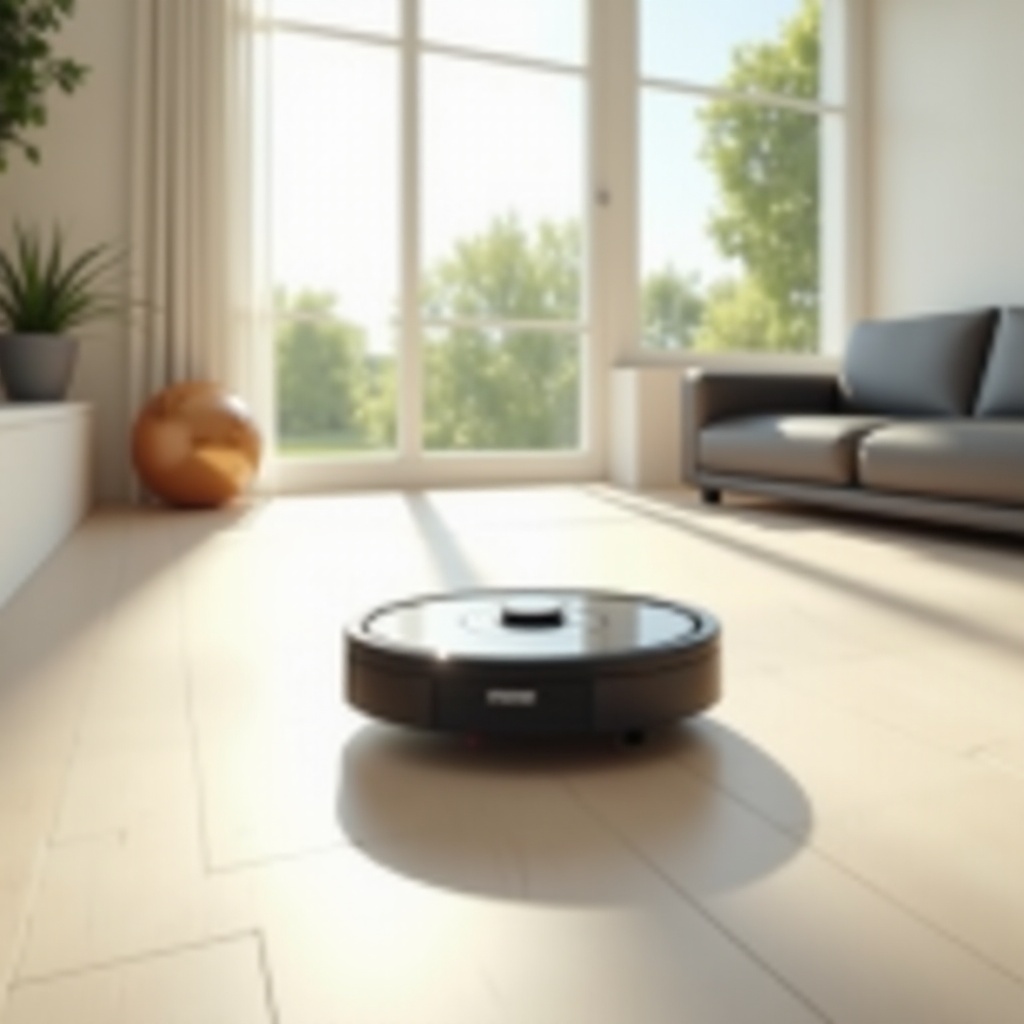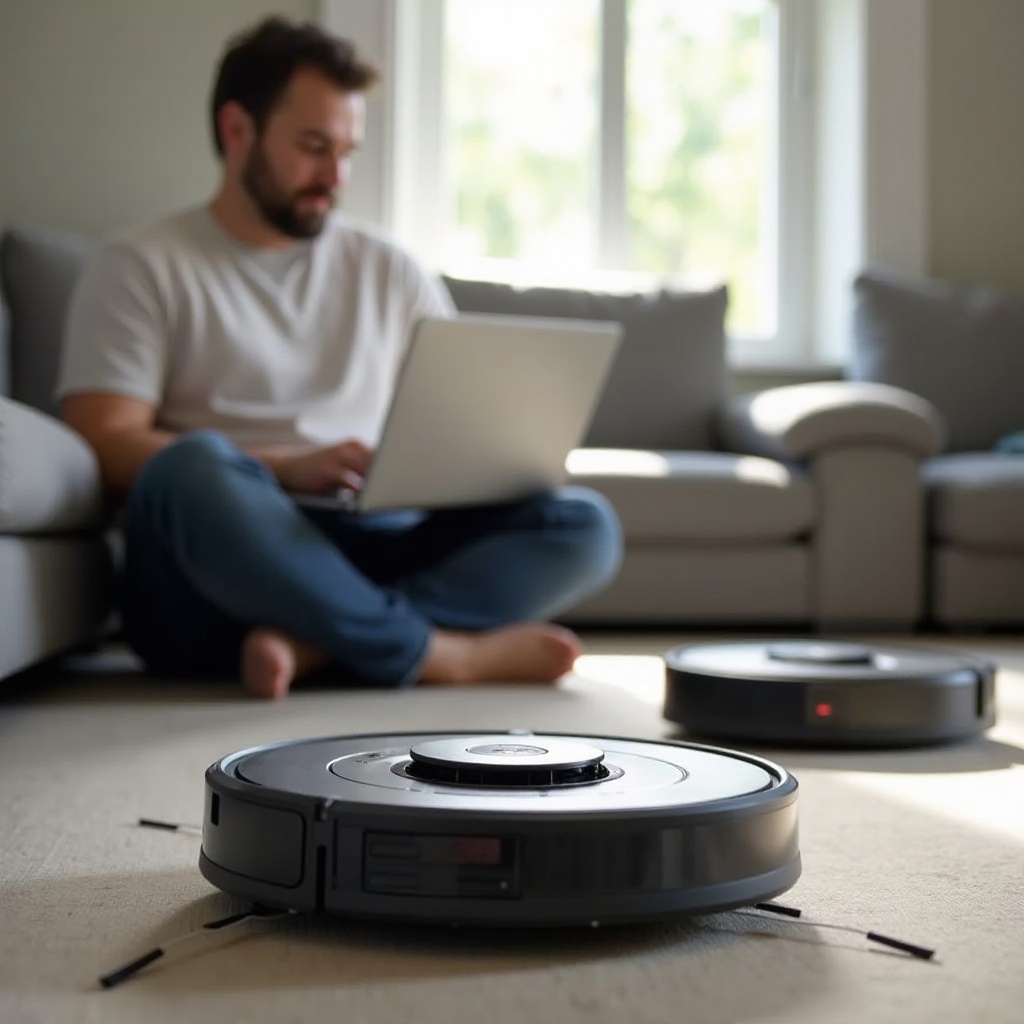Introduction
Experiencing problems with your Roomba can be frustrating, especially when it’s traveling but not vacuuming. One of the leading reasons people invest in robotic vacuums is to save time and maintain clean spaces effortlessly. However, when these automated cleaners stop picking up dirt, it’s crucial to understand the potential causes and solutions.
In this guide, we’ll explore the common reasons your Roomba might not be vacuuming. We’ll also provide you with diagnostic steps, tips for addressing battery and charging issues, and how to check for software and firmware updates. Additionally, we’ll share some preventative maintenance tips to keep your Roomba functioning flawlessly.

Common Reasons for Roomba Traveling Without Vacuuming
Roombas are sophisticated devices, but like any technology, they can experience issues. Here are some common reasons why your Roomba might be traveling without vacuuming:
- Clogged Brushes or Extractors: One of the most common issues is that the brushes or extractors may be clogged with debris, preventing the vacuum from picking up dirt. Regular cleaning of these components is essential.
- Dirt Detection Sensors: These sensors determine if an area needs cleaning. If they’re malfunctioning, the Roomba might move around without engaging its vacuum function.
- Battery Issues: A weak or faulty battery might not have enough power to run the vacuum motor while moving.
- Docking Issues: If the Roomba isn’t properly docking, it might not charge fully, leading to reduced vacuuming power.
- Faulty Vacuum Motor: The motor powering the vacuum could be faulty or burned out, stopping the vacuum function altogether.
- Firmware Glitches: Software bugs can interfere with the vacuum’s operations, sometimes causing it to travel without starting the vacuum motor.
Understanding these potential issues is the first step toward diagnosing why your Roomba isn’t performing as expected. Often, a quick inspection and minor maintenance can resolve the problem.

How to Diagnose Sensor Problems
Sensor problems can be tricky to identify, but following these steps can help:
- Visual Inspection: Start by visually inspecting the sensors for dust and debris. Wipe them clean with a soft, dry cloth. The primary sensors to check are the cliff sensors, bumper sensors, and dirt detection sensors.
- Sensor Tests: Use the Roomba’s diagnostic mode, if available. This mode tests each sensor individually. Refer to your Roomba’s manual for entering diagnostic mode.
- Dirt Detection Sensor Test: To test specific sensors, place the Roomba on a flat surface. Manually place a small amount of debris in front of it and observe if it reacts by starting the vacuum motor.
- Reset Sensors: Sometimes, resetting the Roomba can recalibrate the sensors. Reboot your Roomba by holding the ‘CLEAN’ button for about 10 seconds.
- Environment Check: Ensure your cleaning area doesn’t have obstructions or reflective surfaces that might confuse the sensors. Keep the floor clear of wires and small items.
Maintaining sensors in good working condition is crucial to prevent your Roomba from traveling without vacuuming. Clean the sensors regularly and test their operations whenever you notice performance issues.
Addressing Battery and Charging Issues
Addressing sensor problems is just one part of fixing your Roomba. Battery issues can also be a significant cause of your Roomba traveling without vacuuming. To diagnose and fix these issues, follow these steps:
- Inspect the Battery: Remove the battery and inspect it for any signs of damage or corrosion. If the battery is swollen or damaged, you should replace it.
- Check the Charging Contacts: The charging contacts on both the Roomba and its charging dock can get dirty over time. Clean these contacts with a dry cloth or isopropyl alcohol.
- Monitor the Charging Process: Place the Roomba on the charging dock and verify the charging indicator lights up. If it doesn’t, there might be an issue with the dock or the charging cable.
- Battery Calibration: Sometimes, the battery needs recalibration. Let the Roomba run until it completely drains the battery, then charge it fully without interruption. This helps in recalibrating the battery.
- Battery Replacement: If none of the above steps work, it might be time to replace the battery. Check the Roomba model and purchase a compatible battery.
A healthy battery ensures your Roomba has enough power to operate both the traveling and vacuuming functions. Regular maintenance and timely replacement of the battery can keep your Roomba in top shape.
Software and Firmware Checks
Once you’ve dealt with battery issues, it’s time to check the software and firmware, as glitches in these areas can also significantly affect your Roomba’s performance. Regular updates and checks can prevent these issues:
- Firmware Updates: Always keep your Roomba’s firmware up to date. Firmware updates often include bug fixes that can resolve issues like traveling without vacuuming.
- Check Update Notifications: If you have the iRobot app, it will notify you of any available updates. Download and install updates promptly.
- Factory Reset: If software issues persist, perform a factory reset. This reset returns the Roomba to its original settings, eliminating any bugs. Be sure to back up any custom settings first.
- Reboot the Roomba: Sometimes, a simple reboot by holding the ‘CLEAN’ button can clear minor software glitches.
Staying proactive about software and firmware updates can prevent many performance issues and ensure your Roomba runs efficiently.

Preventative Maintenance Tips
Maintenance is key to avoiding these issues in the first place. Regularly maintaining your Roomba will prevent many problems, ensuring it vacuums effectively. Here are some tips:
- Regular Cleaning: Clean the vacuum’s brushes, extractors, and sensors every week or after every significant use.
- Check for Obstructions: Regularly inspect the Roomba for any obstructions that could affect its vacuuming ability.
- Monitor the Battery: Keep an eye on battery health and replace it when necessary.
- Firmware Updates: Always update the Roomba’s firmware to the latest version.
These routine checks and maintenance tasks can prolong your Roomba’s lifespan and ensure consistent cleaning performance.
Conclusion
A Roomba not vacuuming but traveling can be distressing, especially if you rely on it for everyday cleaning. By understanding the common issues, diagnosing sensor problems, addressing battery concerns, and keeping your firmware updated, you can resolve these problems efficiently. Regular preventative maintenance plays a vital role in keeping your Roomba running smoothly.
Frequently Asked Questions
What should I do if my Roomba is not vacuuming but traveling?
Check for clogged brushes, clean sensors, verify battery health, and ensure firmware is up to date.
How often should I update my Roomba’s firmware?
Check for updates at least once a month or whenever notified by the iRobot app for optimal performance.
Are there any quick fixes for Roomba sensor issues?
Yes, cleaning the sensors and rebooting your Roomba can often resolve minor sensor issues.
